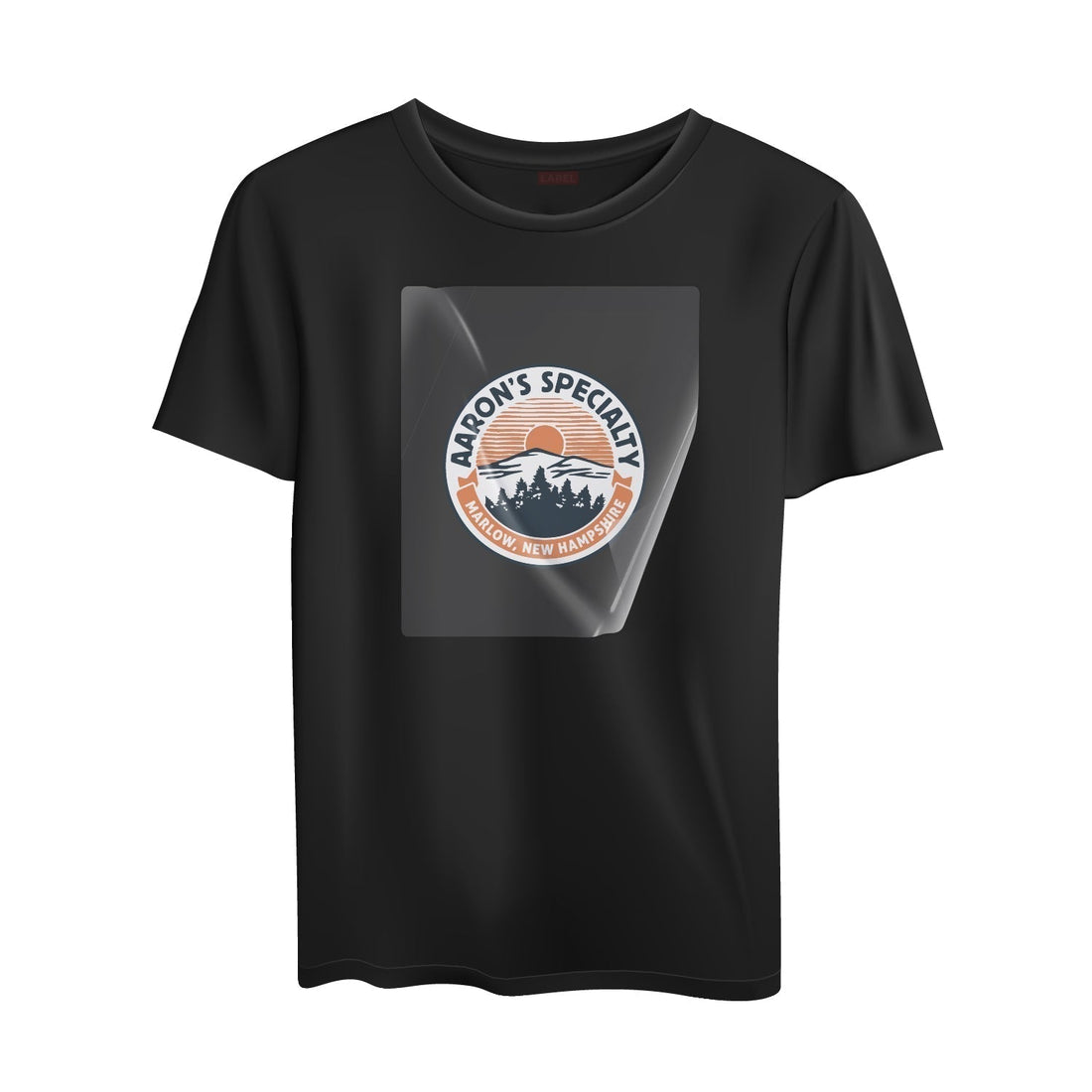Why Is DTF Sizing Crucial for Successful Results?
Getting accurate sizing for DTF transfers is essential for achieving professional-looking results. Whether you're designing for shirts, hoodies, or other garments, having the correct measurements ensures your prints turn out perfectly. Here's why it matters:
• Ensures precise design placement
• Reduces material waste
• Enhances print quality and efficiency
This guide provides helpful DTF size chart expert tips, and highlights common pitfalls to avoid, all to help you streamline production and create eye-catching designs every time.
What Size Should DTF Transfers Be?
DTF transfer sizes vary depending on the garment type and design placement. Below is a detailed chart to guide you in selecting the most suitable size for different garments.
Understanding Design Dimensions
Before selecting a DTF transfer size, consider the dimensions of your design. A larger design may look great on an adult T-shirt but could overwhelm smaller garments like youth or infant sizes. Proper scaling ensures the design fits the garment proportionately and doesn’t lose detail during printing.
Considering Garment Size
Garment size directly impacts transfer sizing and placement. For example:
• Infant and toddler apparel: Use smaller transfers to match the petite garment dimensions.
• Adult garments: Larger transfer sizes make designs more visible and proportionate.
• Oversized items (e.g., aprons, tote bags): Maximize space for bold, impactful designs.
Refer to the charts below to ensure the right fit for every garment.
DTF Transfer Size Chart by Garment Type
| Garment Type | Recommended Transfer Size | Placement | Notes |
| T-Shirt (Adult) | 10" x 12" | Front | Standard size for most designs. |
| T-Shirt (Youth) | 8" x 10" | Front | Adjusted for smaller proportions. |
| T-Shirt (Infant) | 5" x 6" | Front | Perfect for baby apparel designs. |
| Hoodie (Adult) | 10" x 10" | Front | Account for pocket space. |
| Hoodie (Youth) | 8" x 9" | Front | Slightly smaller for youth-sized hoodies. |
| Hoodie (Infant) | 6" x 7" | Front | Suitable for baby hoodie designs. |
| Tote Bag | 12" x 12" | Center (Front) | Ideal for large logos or designs. |
| Backpack | 8" x 8" | Center (Front) |
Great for compact logos and designs. |
| Cap | 2" x 4" | Front |
Best for small logos or text. |
| Apron | 8" x 10" | Center (Front) | Ideal for large designs on the chest area. |
| Towel | 6" x 6" | Center (Front) | Small designs or logos work best. |


Looking for DTF transfers in bulk? Our custom DTF transfers wholesale service might be exactly what you need!
DTF Transfer Size Chart Based on Garment Size
| Garment Size | Placement | Recommended Size | Notes |
| Infant | Front | 5" x 6" | Fits smaller areas without overwhelming. |
| Infant | Back | 6" x 7" | Slightly larger for better visibility. |
| Infant | Sleeve | 1.5" x 7" | Narrower for infant sleeves. |
| Infant | 2.5" x 2.5" | Ideal for small designs or logos. | |
| Youth (S–M) | Front | 8" x 10" | Perfect for balanced design placement. |
| Youth (S–M) | Back | 9" x 11" | Slightly larger than front designs. |
| Youth (S–M) | Sleeve | 2" x 9" | Proportional to youth sleeve length. |
| Youth (S–M) | 3" x 3" | Small and visually appealing. | |
| Adult (S–M) | Front | 10" x 12" | Standard size for most adult garments. |
| Adult (S–M) | Back | 12" x 14" | Larger area for full-back designs. |
| Adult (S–M) | Sleeve | 2.5" x 10" | Great for longer sleeve lengths. |
| Adult (S–M) | 3.5" x 3.5 | Slightly larger for proportion | |
| Adult (L–XL) | Front | 11" x 13" | Slightly larger for bigger garments. |
| Adult (L–XL) | Back | 13" x 15" | Adjusted for extended visibility. |
| Adult (L–XL) | Sleeve | 2.5" x 11" | Extended length for larger sleeves. |
| Adult (L–XL) | 3.5" x 3.5" | Same as standard pocket size. | |
| Adult (2XL+) | Front | 12" x 14" | Maximized for broader areas. |
| Adult (2XL+) | Back | 14" x 16" | Bold, visible design for larger sizes. |
| Adult (2XL+) | Sleeve | 3" x 12" | Fits longer sleeves proportionally. |
| Adult (2XL+) | 4" x 4" | Enlarged for better balance. |
You might be interested: DTF vs. DTG – Pros and Cons of Each Method
Expert Tips for Optimizing DTF Transfer Sizing

Proper planning and adjustments are key to producing high-quality DTF transfers. Here are some expert tips to help you perfect your process:
1. Scaling Designs for Different Fabric Types
Different fabrics react differently to heat, pressure, and ink. Stretchy materials like spandex may require slightly smaller designs to avoid distortion, while textured fabrics like fleece can benefit from bold and simple shapes to maintain clarity.
2. Maximizing Print Quality with Proper Sizing
The size of your design can directly impact print quality. Designs that are too small may lose detail, while oversized prints can result in uneven ink distribution. Stick to recommended sizes based on garment type and design complexity for optimal results.
Got your design ready? Visit our page for pre-built gang sheets and order your DTF transfers today!
3. Handling Complex Designs for DTF Transfers
For intricate designs, consider separating the elements into smaller, more manageable sections. This ensures clarity and minimizes potential errors during transfer. Use layering techniques or simplify the design if necessary.
4. Adjusting for Different Printing Machines and Settings
Not all DTF printers are created equal. Understand your equipment's specific capabilities and limitations, such as maximum sheet size and heat settings, to avoid issues during production.
5. Using Software for Efficient Layout Planning
Layout planning software can help you arrange designs efficiently on gang sheets, reducing material waste and improving productivity. Tools like our free DTF gang sheet builder allow you to maximize print area and save costs.Common DTF Transfer Sizing Mistakes to Avoid
Ignoring the Positioning Guidelines
Misaligned designs can ruin the overall appearance of the garment. Always measure and align your transfers carefully before pressing. Here is a guide on how to make DTF transfers at home like a pro.
Overlooking Fabric Stretch and Fit
Failing to account for fabric stretch can distort designs, especially on fitted garments. Pre-stretch garments where necessary and avoid overly large prints on elastic materials.
Misjudging Design Placement on Gang Sheets
Efficient use of gang sheets is critical to minimizing waste. Poor placement can lead to wasted space and materials. Plan ahead and arrange designs strategically for the best results.
Underestimating the Importance of Test Prints
Skipping test prints can result in costly errors. Always run a test on the same garment and fabric type to ensure the size, placement, and color are accurate.
At DTF New England, we offer free DTF samples to ensure that your work is exactly as you imagine it!
Using Over-sized Designs
Larger isn’t always better. Oversized designs can look disproportionate or exceed the printable area of the garment, leading to poor aesthetics and wasted material. Stick to the recommended size chart to avoid this issue.
Ready to Get the Perfect DTF Results? Let Us Guide You to Success!
Now that you have a complete guide to DTF transfer sizing, you can bring your designs to life with precision and confidence. Whether you’re working on shirts, hoodies, tote bags, or more, having the right DTF transfers is key to achieving professional results. At DTF New England, we offer high-quality custom DTF transfers tailored to your specific needs.Order your DTF transfers now and take your printing projects to the next level!
FAQ
What size DTF transfer for shirts?
DTF transfers for shirts vary based on the type of garment:
• Adult shirts: 10" x 12"
• Youth shirts: 8" x 10"
• Toddler shirts: 5" x 6"
What size DTF transfer for an adult shirt?
Depending on the design and garment size, the standard size for adult shirts is 10" x 12" for the front and 12" x 14" for the back.
What size DTF transfer for a toddler shirt?
For toddler shirts, a front size of 5" x 6" is ideal, providing a proportionate and clear design.
What size DTF transfer for a youth shirt?
Youth shirts typically have a front size of 8" x 10" and a back size of 9" x 11".
What is the maximum size for DTF printing?
The maximum size for DTF printing depends on the printer and gang sheet being used, but for larger sheets, common dimensions are 22" x 24" or 24" x 36".
What size DTF transfer for a hoodie?
For hoodies:
• Adult hoodies: 10" x 10" (front)
• Youth hoodies: 8" x 9" (front)
• Infant hoodies: 6" x 7" (front)
What size are DTF sheets?
DTF sheets come in various sizes, with common options being 12" x 12", 12" x 24", and 24" x 36", depending on the printing needs.

